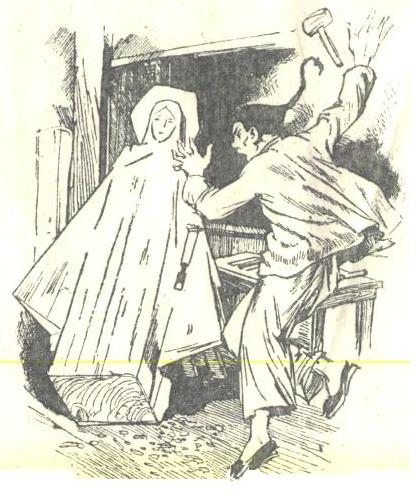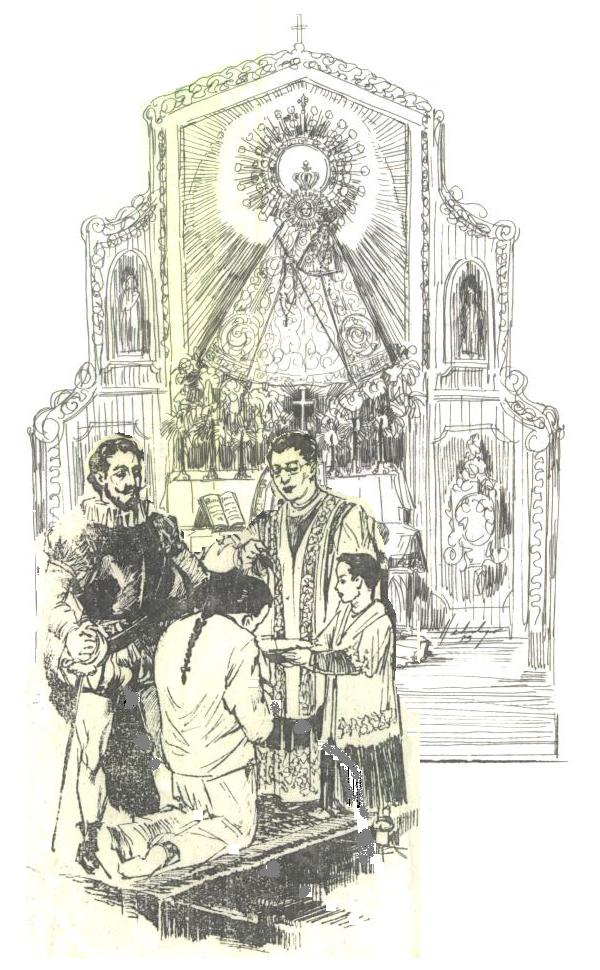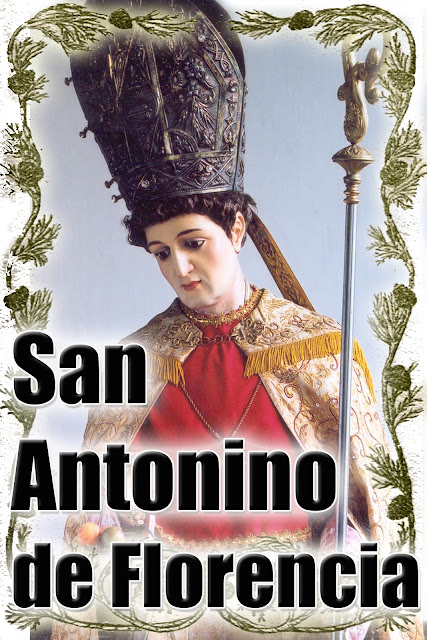NIGHT. It is the 25th of October, 1593. In the waters off Sulphur Point in Batangas a Spanish fleet is becalmed. Out only one week from Manila Bay, it is on its way to join the rest of an armada in the Visayas and sail south to wrest the Moluccas from Dutch control. On the flagship, the Governor-General, Don Gomez Pérez Dasmariñas ponders the situation, unaware of a greater crisis brewing in his own vessel. For even then furtive figures creep in the shadow of the ship's deck. Stealthily, the Chinese rowers overpower the guards, disarm the crew, and kills the Governor.
The Visayan fleet under the command of the Governor's son, Don Luís Pérez Dasmariñas,receives the news of his father's death. It abandons the expedition and returns sorrowfully to Manila. By royal decree, Don Luís succeeds his father as Governor-General, and among his first acts in office is to order the sculpture of an image of Our Lady of the Rosary. Perhaps to find consolation in his hour of loss, perhaps as a predictive gesture that what was left undone by force of arms would someday be accomplished with Her help. Governor-General, Don Luís Pérez Dasmariñas would donate an image of the Queen of the Rosary to the Dominicans of Santo Domingo in Intramuros.
His aide, Captain Hernando de los Ríos Coronel, is entrusted with this special mission. In the trading section of the City, which is monopolized by the sangleyes [i.e. Chinese], he finds a sculptor whose qualifications are highly regarded. It is a pity that the name of such artist does not figure in the records but an inkling of his character can be gleaned from the work he fashioned.
Nuestra Señora del Santísimo Rosario - La Naval de Manila - photo from Bleak!
The keen business eye of the heathen Chinaman perceives only a profitable order, but were he possessed of greater vision he would have seen in it a turning point not only in his own life but in the lives of untold thousands down the centuries.
For the moment, it is a job to be done, and from the pagan's workshop the sound of mallet & chisel is heard all day and far into the night. The image is to be carved of wood, but its face and hands, as well as the Child Jesus in its arms are to be made of priceless ivory. The sculptor pictures a Mother of the Deity in his oriental mind: cheekbones set high, almond-shaped eyes and a pale yellow complexion.
Soon the image takes shape, and, inspired by his creative efforts, he puts the finishing touches with greater zeal. While busy with mallet & chisel he hears a voice, but looking behind sees no one.
He is alone. He resumes his work, and again the voice comes to him, this time unequivocably clear.
He distinctly hears the words, "¡No me des tan fuerte!" - "Do not press so much for it hurts!"
Slowly the terrible realization occurs to him and leaves him completely dismayed. He decides to get some rest, but sleep escapes him all night. In the morning the cheerful light of day gives him new courage to keep up the work again, and he finishes it on schedule.
But the seed had been planted. And the Lady had laid the ground to rescue the soul of that infidel who had, with such good fortune, done her image.
The Chinese sculptor left Manila after his work was finished and had established himself "somewhere in the Ilocos" to get away from it all. In his hours of work he must have often thought of the image he had left behind and who so pointedly reminded him of the due care he had to take in his work. His soul laid in darkness and there was something lacking to unite him completely with the product of his art.
Even in that far away province he keeps thinking about it and, encouraged by his newly found friends, he decides to be baptized into the Catholic faith, but under one condition: he would be baptized at the Church of Santo Domingo, before the image of the Santo Rosario who once spoke to him, whom he loved so much.
The Lady and the sculptor met once more. He who had fashioned the image was to be saved by Her whom that image stood for. In a simple ceremony the infidel became a Catholic. The sculptor and the image were at last united in bonds that transcended mere earthly association.
This story is a part of the rich legend of Rosarian tradition that has passed from generation to generation and which forms part of the patrimony of Marian devotion in the Philippines. The memory of the signal manner in which the pagan Chinese sculptor was benefitted by his work of art is kept to this day.

















